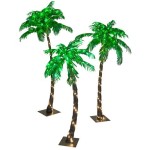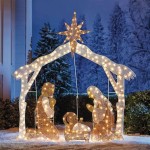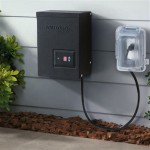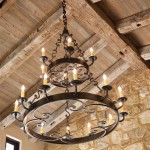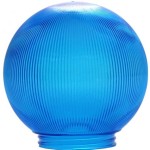Best Solar Powered Lights for Outdoors: Illuminating Your Space Sustainably
Outdoor lighting enhances safety, security, and aesthetics, allowing for the enjoyment of gardens, patios, and walkways after sunset. Solar-powered lights offer a sustainable and cost-effective alternative to traditional wired lighting solutions. Harnessing the sun's energy, these lights eliminate the need for electrical wiring and reduce energy consumption, contributing to a greener environment and lower electricity bills. Selecting the optimal solar-powered lights for outdoor use requires careful consideration of various factors, including light output, battery capacity, design, and weather resistance.
Key Considerations When Choosing Solar Powered Outdoor Lights
Prior to purchasing solar-powered outdoor lights, several factors should be evaluated to ensure they meet specific needs and preferences. These considerations include:
Brightness and Light Output (Lumens): The brightness of a solar light is measured in lumens (lm). The required lumen output depends on the intended application. For ambient lighting along pathways or garden beds, lower lumen lights (10-50 lm) may suffice. For security lighting or illuminating larger areas, higher lumen lights (100-300 lm or more) are necessary. It is important to consider the area you wish to illuminate and choose lights with sufficient lumen output to achieve the desired effect. Lights that are too dim may not provide adequate illumination, while lights that are excessively bright can create glare and be visually unappealing.
Battery Capacity and Run Time: The battery capacity determines how long the light will operate after a full charge. Battery capacity is typically measured in milliampere-hours (mAh). A higher mAh rating indicates a larger battery and longer run time. Solar lights with larger batteries can store more energy and provide illumination for extended periods, even on cloudy days. Consider the typical amount of sunlight the lights will receive and choose lights with a battery capacity that matches the desired run time. Some models offer adjustable brightness settings to conserve battery power and extend the illumination period. Many solar lights have a run time of 6-8 hours on a full charge, but this can vary depending on the battery capacity, light intensity, and weather conditions.
Design and Aesthetics: Solar lights are available in a wide range of designs and styles to complement different outdoor aesthetics. Options include spotlights, path lights, string lights, wall lights, and decorative lanterns. The design should be visually appealing and compatible with the surrounding landscape or architecture. The choice of materials, such as stainless steel, plastic, or glass, can also influence the overall look and durability of the lights. Consider the color temperature of the light emitted, which can range from warm white to cool white. Warm white light (2700-3000K) is often preferred for creating a cozy and inviting atmosphere, while cool white light (4000-5000K) provides brighter and more focused illumination.
Weather Resistance and Durability: Outdoor lights are exposed to various weather conditions, including rain, snow, and extreme temperatures. It is essential to choose solar lights that are designed to withstand these conditions. Look for lights with a high Ingress Protection (IP) rating, which indicates the level of protection against dust and water. An IP rating of IP65 or higher is generally recommended for outdoor use, as it signifies protection against water jets and dust ingress. The materials used in the construction of the lights should also be durable and resistant to corrosion or degradation from exposure to the elements. Stainless steel or weather-resistant plastic are common choices for outdoor solar lights.
Different Types of Solar Powered Outdoor Lights
The market offers a diverse array of solar-powered outdoor lights, each designed for specific applications and aesthetic preferences. Understanding the various types available is crucial in making an informed purchasing decision.
Path Lights: Solar path lights are designed to illuminate walkways, driveways, and garden paths. They typically feature a stake that is inserted into the ground, providing a simple and easy installation process. Path lights are available in various styles, from traditional to modern, and can be used to create a well-lit and visually appealing pathway. They generally have lower lumen outputs (10-50 lm) sufficient for marking the path. Some models have adjustable height and brightness settings, allowing you to customize the illumination to suit your needs. The spacing between path lights should be carefully considered to ensure adequate and even lighting along the path. Closer spacing will result in brighter illumination, while wider spacing will create a more subtle effect.
Spotlights: Solar spotlights are used to highlight specific features in the landscape, such as trees, shrubs, or architectural elements. They typically have a focused beam of light that can be directed to accentuate the desired object. Spotlights often have higher lumen outputs (100-300 lm or more) than path lights, providing more intense illumination. They can be mounted on the ground or attached to walls or fences. Adjustable heads allow you to precisely position the beam of light. Some spotlights feature motion sensors, which activate the light only when movement is detected, conserving battery power and providing added security. Solar spotlights are an excellent way to add visual interest and create a dramatic effect in your outdoor space.
Wall Lights: Solar wall lights are mounted on exterior walls to provide ambient lighting for patios, decks, and entryways. They offer a decorative and functional lighting solution, enhancing the security and aesthetics of your home. Wall lights are available in a wide range of styles, from traditional lanterns to modern sconces. They typically have moderate lumen outputs (50-150 lm), providing sufficient illumination for surrounding areas. Some wall lights feature dusk-to-dawn sensors, which automatically turn the light on at dusk and off at dawn. This eliminates the need for manual operation and ensures consistent illumination throughout the night. Solar wall lights are a convenient and energy-efficient way to add style and security to your outdoor spaces.
String Lights: Solar string lights are a popular choice for creating a festive and inviting atmosphere in outdoor spaces. They consist of a string of small LED bulbs powered by a solar panel. String lights are often used to decorate patios, decks, gardens, and fences. They are available in various colors and styles, from traditional white lights to multi-colored options. String lights typically have low lumen outputs (5-10 lm per bulb) and are primarily used for decorative purposes. Solar string lights are easy to install and require no electrical wiring. They can be hung from trees, fences, or structures using hooks or clips. Some models offer multiple lighting modes, such as steady-on, flashing, or fading. Solar string lights are a versatile and affordable way to add ambiance and charm to your outdoor gatherings.
Security Lights: Solar security lights are designed to deter intruders and enhance the safety of your property. They typically feature motion sensors and high lumen outputs (300 lm or more), providing bright illumination when movement is detected. Security lights are often installed near entryways, driveways, and garages. They are designed to activate quickly and provide a wide area of coverage. Some models feature adjustable sensor ranges and light duration settings, allowing you to customize the activation zone and illumination time. Solar security lights are a cost-effective and environmentally friendly way to improve the security of your home.
Tips for Maximizing the Performance of Solar Outdoor Lights
To ensure optimal performance and longevity of solar outdoor lights, it is crucial to follow certain guidelines and maintenance practices.
Optimal Placement: The placement of solar lights is critical for maximizing their performance. Solar panels require direct sunlight to charge the batteries effectively. Choose locations that receive at least 6-8 hours of direct sunlight per day. Avoid placing lights in shaded areas or under trees, as this will reduce the amount of sunlight they receive. The solar panel should be positioned to face the sun for the most efficient charging. Regularly clean the solar panel with a soft cloth to remove any dirt or debris that may be blocking sunlight. In areas with limited sunlight, consider using solar lights with larger solar panels or higher-capacity batteries.
Regular Cleaning: Dust, dirt, and debris can accumulate on the solar panels, reducing their efficiency. Regularly clean the solar panels with a soft, damp cloth to ensure optimal sunlight absorption. Avoid using abrasive cleaners or chemicals, as these can damage the solar panel surface. Check the light fixtures for any signs of corrosion or damage and clean them as needed. Proper cleaning and maintenance will help extend the lifespan of your solar lights and ensure they continue to perform at their best.
Battery Maintenance: The batteries in solar lights are rechargeable and have a limited lifespan. Over time, the battery capacity may decrease, resulting in shorter run times. To extend the battery life, avoid overcharging or deep discharging the batteries. Some solar lights have overcharge protection circuits, which prevent the battery from being damaged by excessive charging. If the batteries are removable, consider replacing them every 1-2 years to maintain optimal performance. Choose replacement batteries that are compatible with the solar lights and have the same voltage and capacity as the original batteries. Proper battery maintenance will help ensure that your solar lights continue to provide reliable illumination for years to come.
Seasonal Adjustments: The amount of sunlight available varies throughout the year, depending on the season and geographic location. During the winter months, when sunlight is limited, solar lights may not charge as effectively, resulting in shorter run times. To compensate for this, consider adjusting the placement of the lights to maximize sunlight exposure. You may also need to clean the solar panels more frequently to remove any snow or ice that may be blocking sunlight. Some solar lights have a winter mode, which reduces the light output to conserve battery power during periods of low sunlight. Making seasonal adjustments will help ensure that your solar lights continue to provide adequate illumination throughout the year.
Storage During Winter: In regions with harsh winters, storing solar lights indoors during the off-season can help prolong their lifespan. Extreme cold and snow can damage the solar panels and batteries. Before storing the lights, fully charge the batteries and clean the fixtures thoroughly. Store the lights in a dry, cool place away from direct sunlight. When you are ready to use the lights again in the spring, allow them to fully charge in direct sunlight before activating them. Storing solar lights during the winter months can help protect them from the elements and ensure they are ready to perform at their best when warmer weather returns.

5 Best Outdoor Solar Lights Of 2024 Reviewed

The Best Solar Path Lights Of 2024 According To Testing Bob Vila

Best Solar Lights On Test In 2024 Bbc Gardeners World

5 Best Outdoor Solar Lights Of 2024 Reviewed

The Best Solar Landscape Lights Of 2024 Popular Science

Gardenbliss Best Solar Lights For Outdoor Pathway 10 Brightest Light Set Walkway Patio Path Lawn Garden Yard Decor Double Waterproof Seal Large Led Landscape Outside Post Lighting Lamps Com

10 Most Popular Solar Lights For Yard 2024 The Jerum Post

The Best Solar Pathway Lights

Best Solar Garden Lights Guide 2024 Updated

The 10 Best Solar Outdoor Lights Sustainable And Stylish Picks Nightvision Lighting
